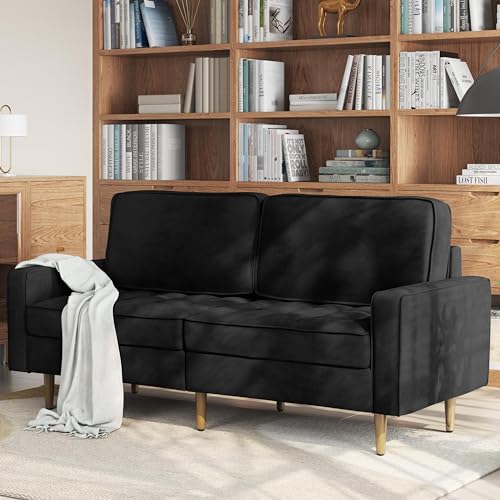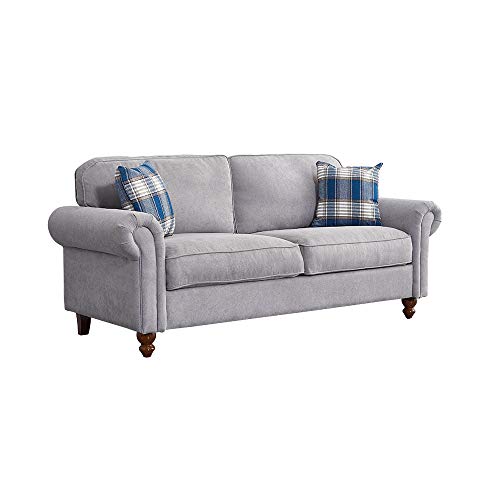강연강좌 Guide To 2 Seater Leather And Fabric Sofa: The Intermediate Guide Towa…
페이지 정보

본문
 Choosing Between a small 2 seater fabric sofa 2 seater leather and fabric sofa leather and fabric 2 seater sofa and fabric sofa (this hyperlink)
Choosing Between a small 2 seater fabric sofa 2 seater leather and fabric sofa leather and fabric 2 seater sofa and fabric sofa (this hyperlink)It can be difficult to choose between leather and fabric when you are searching for a new couch. This is especially true if you aren't a professional in furniture.
If you have kids or live in apartments The leather option might be the best choice for you. It is easy to maintain and looks gorgeous in most homes.
Comfort
The sofa is usually the focal point in many homes and is a major purchase. You want a sofa that you can sit on for many hours and looks stunning and stands the test of time. The decision between fabric or leather can be confusing It is crucial to evaluate your needs as well as your lifestyle and budget prior to making a choice.
Leather is a premium material that has a luxurious feel and radiates class in the home. It is tough and stain-resistant, it is resistant to children and pets and can last for a long time with proper care. It is expensive initially and may require regular conditioning to prevent cracks or peeling.
Fabric sofas are available in a vast selection of styles, colors and fabrics. They can be cheaper than leather sofas. They are also soft and more cosy, and can be "broken in" right from the beginning. They are more prone to dust mites or pet hairs and require frequent cleaning. There are now hypoallergenic fabrics and new technology available.
Fabric sofas can last for up to 15 years if they're maintained properly. Regular vacuuming and deep cleaning aid in keeping the fabric clean and free of stains and odours. They also can shrink and flatten over time, just as leather. Additionally, many fabrics have been treated with chemical to make them stain-resistant as well as flame-resistant. They can release volatile organic chemicals that can cause allergic reactions and alter indoor air quality.
Durability
When purchasing sofas, we often choose fabrics that are incredibly durable, as this is important if you have pets and children. You don't have to spend lots of money up front in case you'll regret it after the first scratch or claw. You don't want a cheap item that isn't durable enough for daily use.
Leather is also extremely durable with a tremendous tear strength. It can last up four times longer than fabric and is resistant against cracking, fading and flaking. It can be conditioned to replenish its natural oils, and make it appear new.
Fabrics are less expensive and come in many different colors, patterns, and textures that can be adjusted to any interior design scheme. Fabrics are easier to clean and are able to stand up to some wear and tear. However, they do fade over time and are more susceptible to moisture.
Microfiber is a good choice for durability and is available in a wide range of colors, but it's not as durable as genuine leather and will not be able to take the punishment of scratches. It's nevertheless a great option for families because of its resistance to stains and spills. It's also easy to clean with an aqueous cloth.
Suede, on the other hand, is difficult to keep clean and can be even more difficult to repair than leather. It is prone to lose its shape and feel rough if not maintained regularly. It's also a very thin material and so might not be as strong as sheepskin or cowhide leather.
Allergens
Fabrics can have a significant impact on allergies. It is crucial to know how different options perform. Fabrics tend to retain allergens such as dust mites, pet dander and mold that can cause symptoms of hay fever, rhinitis, asthma, and eczema. This is because these fabrics provide the perfect environment for them to fester.
However, leather, unlike other materials is not a reservoir of the allergens and provides a consistent level of comfort, no matter the season. It can also cause allergic dermatitis in those with contact dermatitis or are allergic to chemicals used in tanning. Utilizing vegetable-tanned leather and ensuring regular skincare routines is essential to reduce skin reactions.
Both sofas made of fabric and leather are durable, but the material you select will have a major impact on how well your couch can stand up to wear. A good quality fabric will stand up to the demands of daily usage without fading or sagging and will resist spills and body oils effortlessly. Many modern couches come with stain-resistant treatments to make cleaning easy.
Although you may not be able to completely stop an allergic reaction from the leather in your sofa, you can help to reduce allergens by keeping a lint roller close by and regularly vacuuming your living space. This can help reduce the amount of dirt, pet hair and dust mites that build up on your sofa. If you are still experiencing allergies, consider replacing your sofa with a allergy-friendly model. For example, a leather sofa made of synthetic or vinyl is less likely to trap dust mites and pet dander. It also will help you breathe easier.
Scratches
When buying a leather sofa 2 seater fabric, it is important to consider how much wear and tear you can expect from it. The amount of time a sofa is expected to last depends on the finish, colour and leather quality. Also, you must ensure that the couch is strong enough to withstand spills and other messes. This can be accomplished by choosing a couch with a sturdy wooden frame and high-density foam cushions.
Leather can be scratched for various reasons, such as stretching or marking territory, or even recovering the stress. Scratches are of varying severity. They can range from minor surface scratches to deep punctures or cuts. Minor scratches can be fixed with a leather conditioner. This will restore the balance between oil and moisture in the leather and stop it from drying out or cracking. The amount of damage will determine the type of treatment needed.
If you have cats, it is an ideal idea to trim their nails regularly as this can aid in preventing scratching on your couch. You can also retrain your cat's scratching habits by offering alternative scratching surfaces, such as sisal rope or cardboard. Another option is to use a pet-safe furniture polish, which can be applied with an abrasive cloth to the damaged area.
It is essential to clean your leather sofa regularly and keep it away from heat and direct sunlight, because they dry it out. This could cause the leather to crack. Repairing this can be difficult and requires an overhaul. It is recommended to apply a leather conditioner to keep the leather supple.
Smell
A leather couch tends to have a distinct smell than fabric. This is due to the fact that it's porous and can absorb unwanted odors such as smoke, body odor, or food easily. The good news is that the smells will usually disappear after a while and especially when you use a non-toxic cleaning product that is fragrance-free.
If the smell is strong, it could mean there's something wrong with the foam. This is usually caused by the chemical off-gassing that occurs in polyurethane, which is a petroleum-based derivative. If you're worried about this, you should look for couches that are CertiPUR-US certified latex foams or natural latex.
Another way to identify fake leather is to feel for bumps or textures on the back of the sofa. This indicates that the leather is bonded and not genuine top grain. You can also conduct a visual check by laying the sofa on its side and observing any visible upholstery backing. If you smell it, then it's probably a synthetic material, such as polyester or polyurethane. These types of materials will have a different scent than leather.
Cleaning your leather sofa on a regular basis will keep it looking and smelling great. This will keep it looking great and fresh and also prevent it from becoming stiff or cracking as time passes. Begin by vacuuming and dusting the couch before wiping it down with a dry cloth and baking soda (a good natural way to get rid of the smell). This is recommended to do this at least every two seater fabric sofa weeks to get rid of dust or dirt. Apply leather conditioner to keep the texture and color of your sofa.

- 이전글Through Wall Cat Flap 24.10.31
- 다음글Was ist Tarot? 24.10.31
댓글목록
등록된 댓글이 없습니다.
